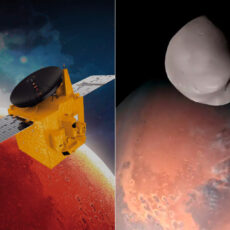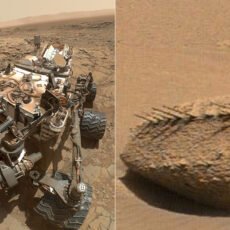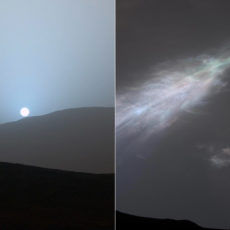
NASA’s Perseverance Mars rover used its SHERLOC (Scanning Habitable Environments with Raman and Luminescence for Organics and Chemicals) instrument to study several rocks around a rocky outcrop called ‘Skinner Ridge’ in the Jezero Crater. This instrument, located on the rover’s robotic arm, can study the chemical makeup of rocks by analyzing how they scatter light.


How does SHERLOC work? The instrument essentially directs a UV laser at its target and then observers how it is absorbed and then emitted. This provides a unique spectral “fingerprint” of different molecules, thus allowing scientists to classify organics and minerals present in a rock and understand the environment in which it formed. Once it captures the rock’s textures, data is then added to those images to produce spatial maps of chemicals on its surface.
- Detailed Lunar Replica - Features a detailed Eagle lunar lander replica with lunar surface, crater, footprints, and U.S. flag for a realistic space...
- Realistic Modular Model - This modular set includes a descent stage with gold-colored landing pads, panels, opening camera, laser hatches, and movable...
- Ascent Stage Interior - The ascent stage boasts a detailed interior with room for 2 astronaut minifigures, finished with an Apollo 11 Lunar Lander...
These detections are an exciting example of what SHERLOC can find, and they’re helping us understand how to look for the best samples. We see a set of signals that are consistent with organics in the data from Quartier. That grabbed everyone’s attention,” said Sunanda Sharma, Lead Author from NASA’s Jet Propulsion Laboratory in Southern California.






